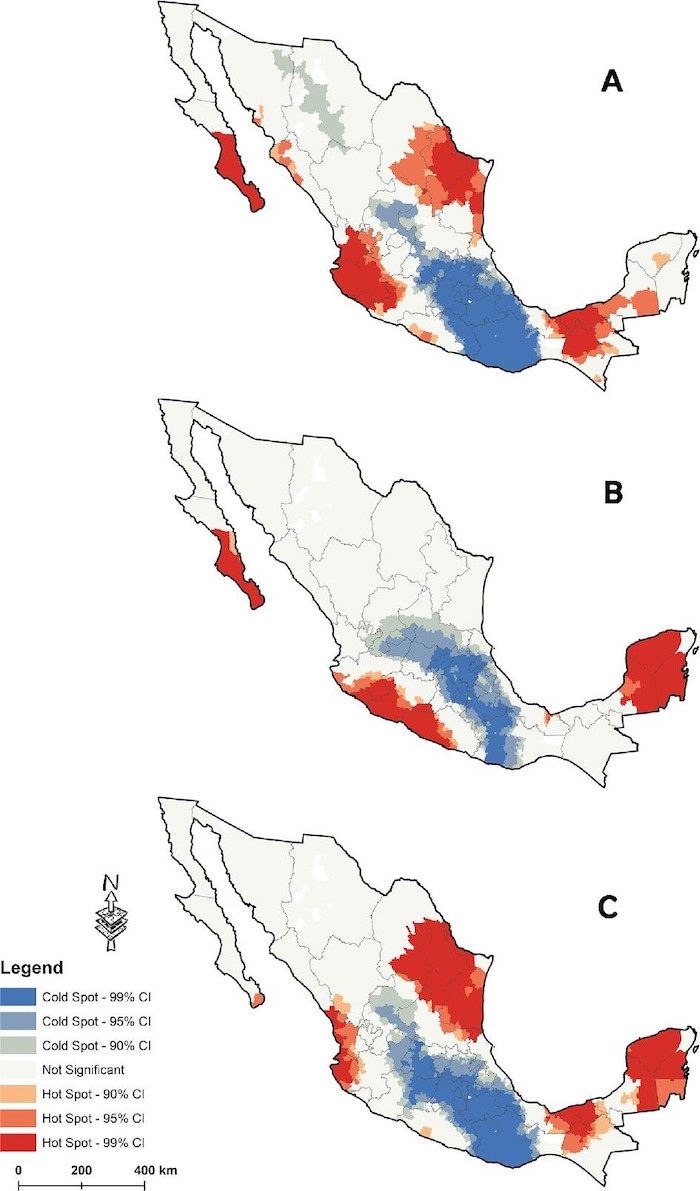
KELLINGS – A Bayesian spatiotemporal approach to modelling arboviral diseases in Mexico
Moeen Hamid Bukhari, Muhammad Yousaf Shad, Uyen-Sa D.T. Nguyen, Jesús A Treviño C, Woojin Jung, Waheed U. Bajwa, Ana Lucía Gallego-Hernández, Renee Robinson, Nadia Sarai Corral-Frías, Gabriel L. Hamer, Penghua Wang, Esther Annan, Chaelin K. Ra, David Keellings, Ubydul Haque
Article first published online: 8 September 2023
DOI: https://doi.org/10.1093/trstmh/trad064
ABSTRACT: The objective of this study was to evaluate the spatial and temporal patterns of disease prevalence clusters of dengue (DENV), chikungunya (CHIKV) and Zika (ZIKV) virus and how socio-economic and climatic variables simultaneously influence the risk and rate of occurrence of infection in Mexico. To determine the spatiotemporal clustering and the effect of climatic and socio-economic covariates on the rate of occurrence of disease and risk in Mexico, we applied correlation methods, seasonal and trend decomposition using locally estimated scatterplot smoothing, hotspot analysis and conditional autoregressive Bayesian models. We found cases of the disease are decreasing and a significant association between DENV, CHIKV and ZIKV cases and climatic and socio-economic variables. An increment of cases was identified in the northeastern, central west and southeastern regions of Mexico. Climatic and socio-economic covariates were significantly associated with the rate of occurrence and risk of the three arboviral disease cases. The association of climatic and socio-economic factors is predominant in the northeastern, central west and southeastern regions of Mexico. DENV, CHIKV and ZIKV cases showed an increased risk in several states in these regions and need urgent attention to allocate public health resources to the most vulnerable regions in Mexico.
Read the full publication in Tropical Medicine and Hygiene.